Three-year rotational green cover trial in Scotland improves spring barley yield and benefits the farmed environment
27th August 2019
A ground-breaking research trial conducted by Kings Crops, a division of Frontier Agriculture, and the James Hutton Institute into the impact of green cover crops in Scotland has demonstrated notable benefits for spring barley yields, soil and water quality, biodiversity and soil resilience.
The three-year trial assessed ongoing soil conditions and compared yield results from Concerto spring barley. The Concerto was grown on plots previously planted with either green cover crop mixes or control stubble from another barley crop.
Over the trial period, as well as improved organic matter and overall soil conditions, the seven cover crop options led to barley yield increases of up to 0.6t/ha by the third year. In particular, Defender oil radish showed the most impressive results overall, followed closely by the Radish Mix (oil radish and tillage radish) and the Kings Soil Vitality and Soil Structure mixes. The impact from the over-wintered stubble was minimal in comparison.
Evidence-based insight to support growers north of the border
Kings implements a comprehensive trials programme across the UK as part of its commitment to ongoing research and development in different regions. As well as collaborative partnerships such as that with the James Hutton Institute, Kings also holds green cover, game cover, greening and forage crop trials at all of Frontier’s 3D Thinking (Discovery, Development and Demonstration) sites and new Soil Life demonstration sites. The findings help to shape the advice Kings technical advisors and Frontier agronomists give to growers.
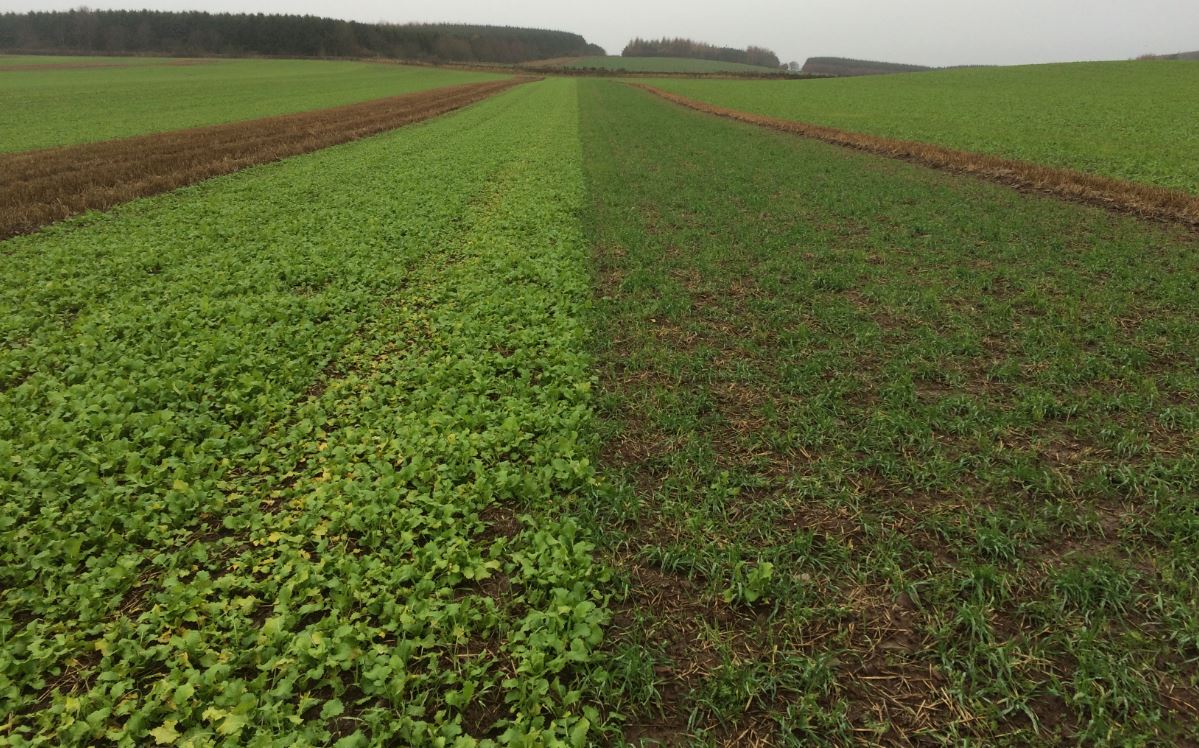
“As a result, it was important that this trial replicated realistic conditions and timings so that we could gather accurate results, assess the outcomes and identify the benefits. We see plenty of examples in other areas of the UK where cover crops improve the outputs of cropping rotations and bring about significant environmental benefits, so it’s important for us to better understand the options available to growers in Scotland so they can capitalise on these benefits too.”
Cover crops are fast growing annuals which, when planted between two cash crops, play a significant role in harvesting and recycling valuable nutrition, improving soil structure, reducing erosion and benefitting farm biodiversity. As a result, their inclusion in the rotation can form part of a responsible cropping strategy that helps to advance natural capital and safeguard soil, boosting yields as a result and therefore delivering financial savings.
The options used in the trial comprised Jupiter Turnip rape, Kings Structure Mix, Defender oil radish, Radish Mix (oil radish and tillage radish), Kings Vitality mix, Vetch & Rye and Kings EFA mix (mustard and oats). For the duration of the trial, each crop was repeatedly sown after the barley harvest in the same field alongside the control stubble with all plots GPS fixed; drilled in 200 metre long, 6 metre wide strips over a block of 6.9 hectares. Fertiliser was applied alongside the seed, comprising 30kg nitrogen (N), 5.4kg of potassium (P) and 19kg of potash (K) per hectare.
Each year the cover crops provided good rooting and overall ground cover so it was great to see that successful establishment and growth could be achieved. However, so that we could get a more detailed understanding of their wider impact, we conducted several over-winter assessments,” said Alan. “We carried out worm and slug counts, looked at soil stability and drainage and measured the sheer strength of the soil. We also recorded the fresh weight cutting of the cover crop to identify how much N, P and K had been absorbed and measured the overall above-ground biomass created by each crop."
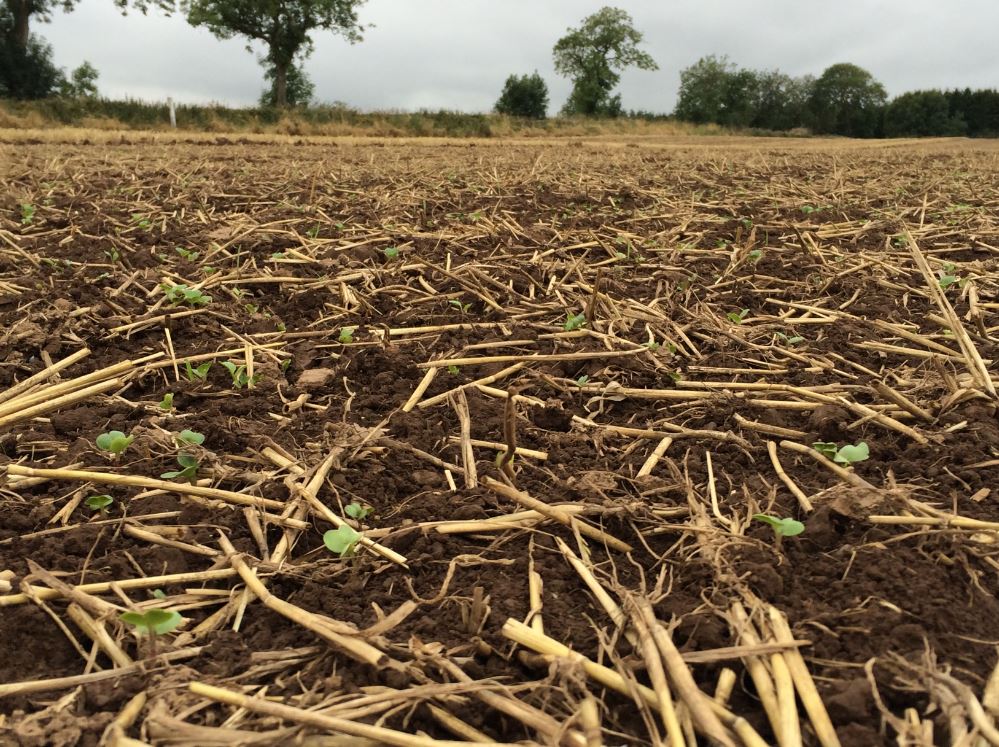
The cover crops were ploughed in April and the fields drilled with Concerto spring barley shortly afterwards. In the first year, tests showed that the soils were already more resilient. The risk of erosion had reduced and there was an increase in organic matter content where a cover crop had been. In the second year, these benefits continued alongside notable differences to the following Concerto barley crop, with the mean yield increased by more than 450kg per hectare between 2016 and 2017.
While barley yields were slightly lower in the third year due to the dry season, they were still much higher than the strips that were left over as winter stubbles. Of additional note was the consistency of nitrogen levels within the harvested grain samples. Previously, there had been a general concern that improving soil fertility may bring nitrogen levels up in the barley and cause it to miss malting specifications but this was not the case.
Blair McKenzie, Soil Scientist at the James Hutton Institute, noted that the established cover crops faced three very different winters. “2015-16 was one of the wettest on record, while 2016-17 was nearer average and 2017-18 had a very cold finish with the ‘Beast from the East’ in late February. This meant that the state of the cover crops into March also differed between years. Despite this, the soil conditions and barley yield were consistently better under the cover crops than in soil that had been left with cereal stubble over-winter. “
As well as improving yield for the following crop, the cover crop options would also help growers to meet potential Ecological Focus Area requirements, grazing demand and agri-environment schemes.
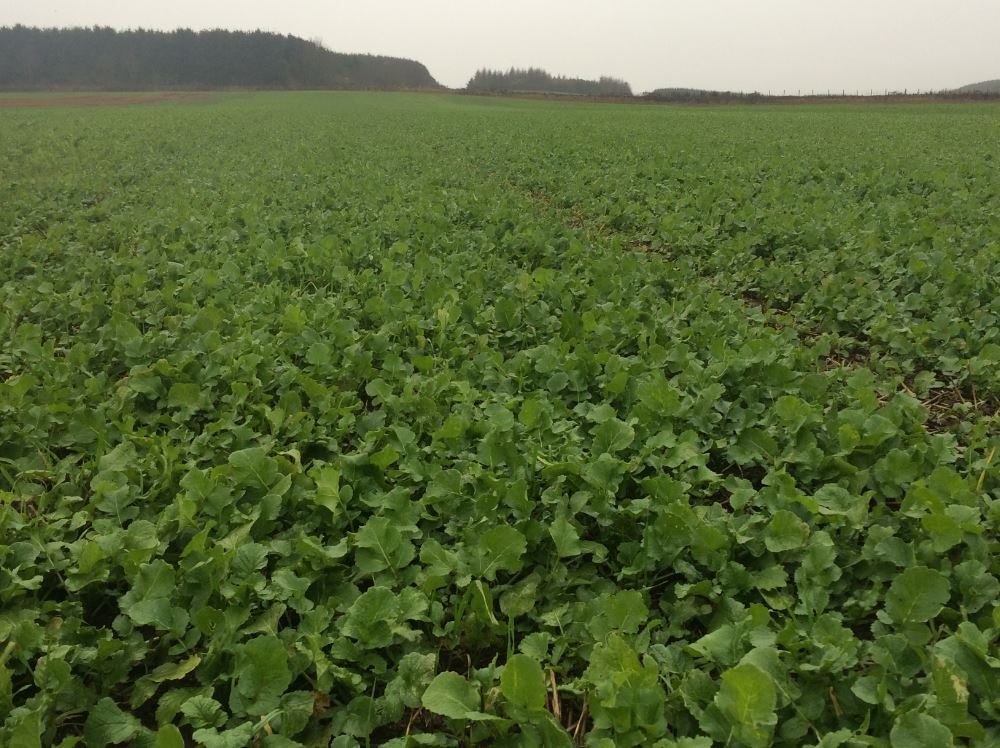
“We’re really pleased this trial has highlighted that, given careful planning and management, cover crops can be just as beneficial north of the border. Knowing exactly what can work means we can now share this evidence with our growers, helping them to make well-informed decisions when it comes to incorporating cover crops on farm.”advise growers to consider their overall objectives, planting date, following crop, timings, soil type, location and wider rotation when considering a cover crop. With conditions often more severe and timings very different in Scotland, these factors are even more important.
Kings Sales Manager, Richard Barnes also commented, “This trial has been invaluable when working through cover crop options with growers new to the concept. The research was independently run, well constructed and, by demonstrating the yield benefits achievable over time, it has shown the significant benefits cover crops can bring to the following crop and wider rotation.
“The fact that we have been able to achieve these results in Dundee means this knowledge is transferable throughout the whole of the UK, something which would have been difficult to do had we undertaken the work in East Anglia for example. We’ve been able to show positive, realistic, worthwhile results in an area with some of the harshest conditions.”
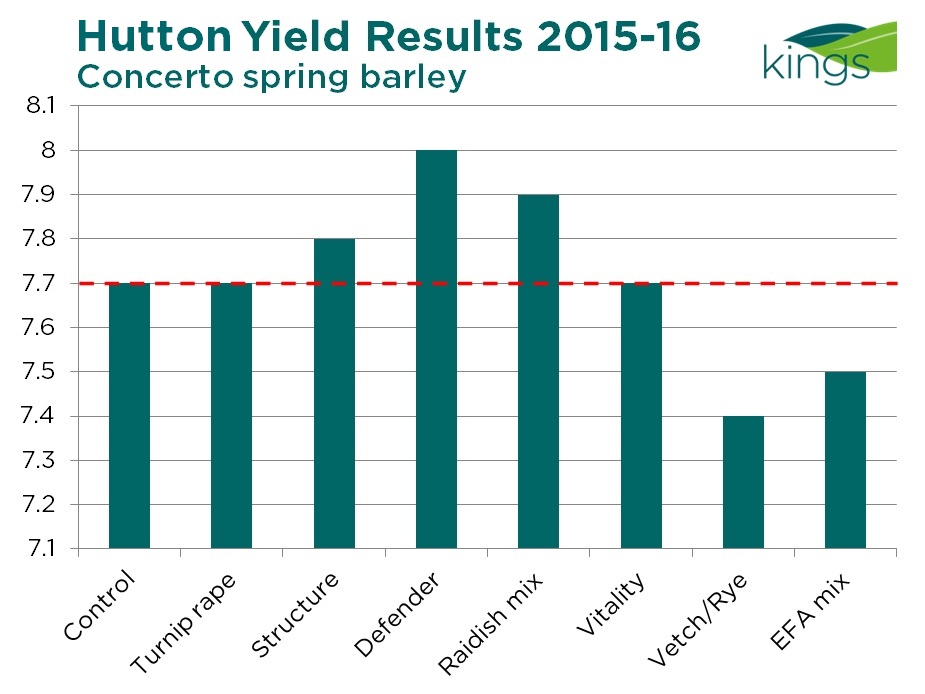
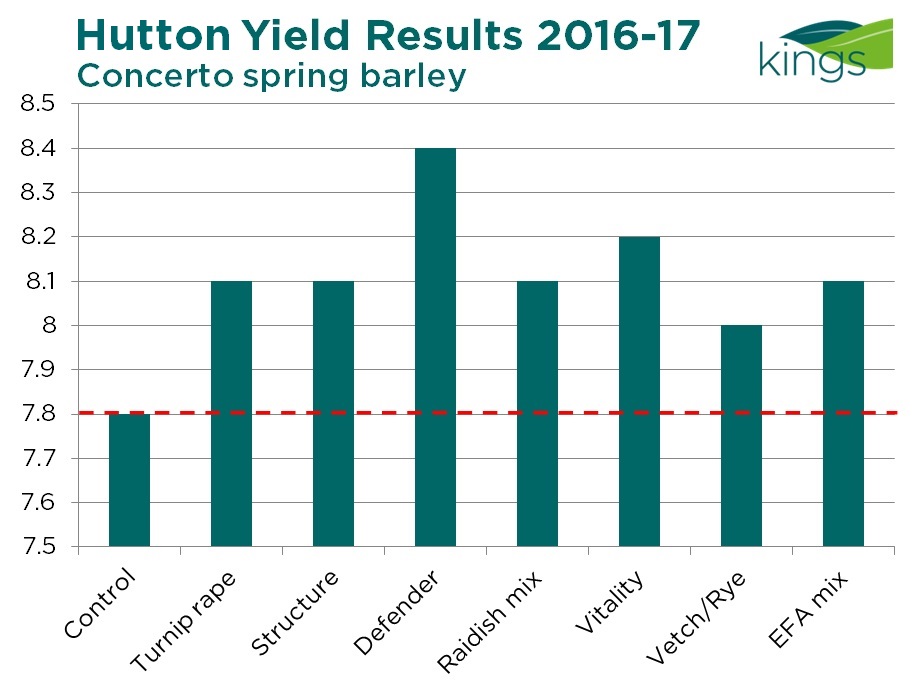
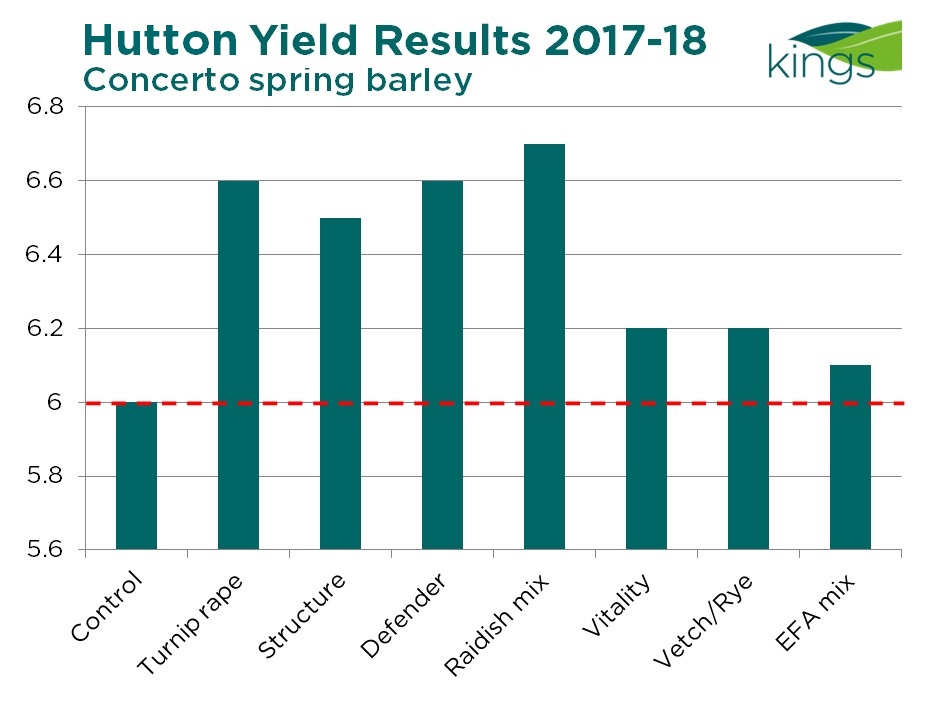
The seven cover crop options led to barley yield increases of up to 0.6t/ha by the third year.









